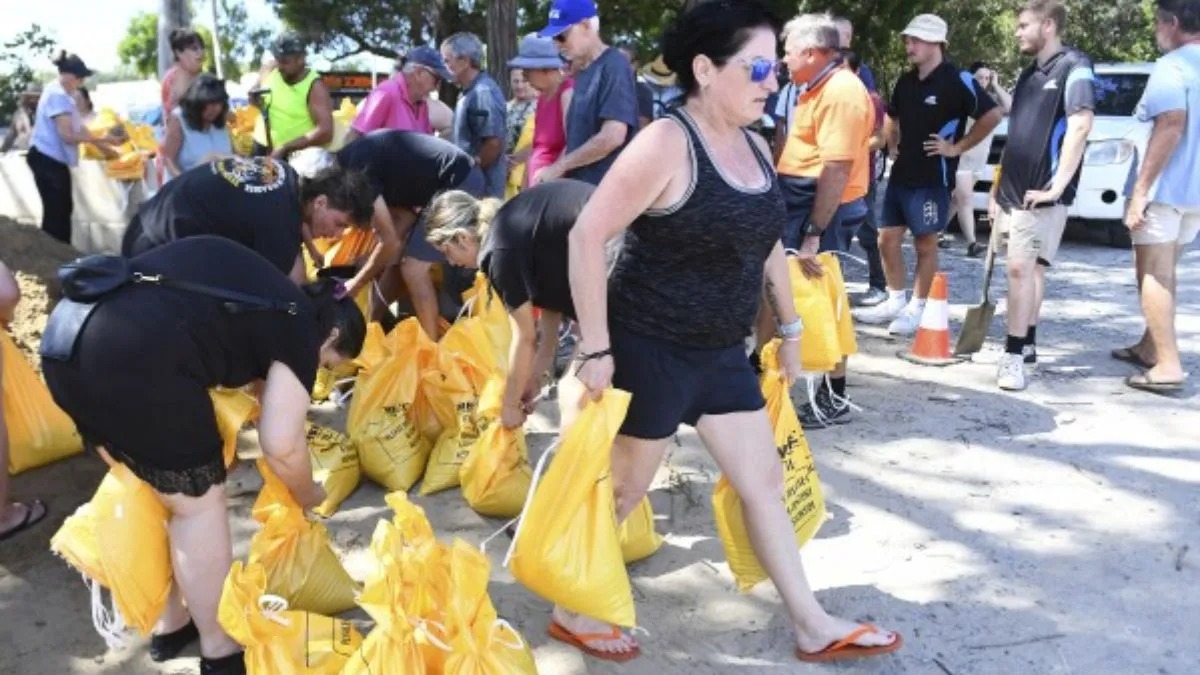
Australia’s east coast is bracing for Cyclone Alfred, a powerful storm that could submerge over 20,000 homes and displace millions of residents. Coastal areas, including Brisbane, are preparing for severe flooding and extreme winds, with people rushing to stock up on essential supplies.
The looming cyclone is the first to hit Australia in 51 years, with authorities urging residents in low-lying areas to take precautionary measures. Emergency teams are on high alert as the tropical storm strengthens over the Pacific Ocean, expected to impact Brisbane starting Wednesday.
Emergency Preparations Underway as Cyclone Alfred Approaches
Residents in affected regions have started reinforcing their homes with sandbags to mitigate potential flood damage. Cyclone Alfred, currently forming offshore, could bring devastating winds and heavy rainfall, making it one of the most severe weather events in recent history.
“This storm has the potential to be catastrophic,” said a local resident, Collopy. “Winds will remain intense until landfall.” The last tropical cyclone of this magnitude, Cyclone Joe, struck the Gold Coast in 1974, causing widespread destruction.
More Than 3 Million People at Risk
Australian Prime Minister Anthony Albanese has announced emergency assistance, including the distribution of 250,000 sandbags to protect homes and infrastructure. “A cyclone of this strength is extremely rare outside tropical zones, which is why we are taking urgent action,” Albanese stated in Brisbane.
Brisbane Lord Mayor Adrian Schrinner warned that at least 20,000 homes in the city could experience flooding at some stage. Officials continue to monitor the storm closely and advise residents to stay indoors, follow evacuation orders, and remain updated on weather alerts.
Authorities are urging people to prepare for power outages, supply shortages, and severe flooding, as Cyclone Alfred’s impact could be long-lasting. Residents in vulnerable areas should move to safer locations and keep emergency kits ready.
Stay tuned for further updates as this historic cyclone moves closer to the Australian coast.

 Share
Share






